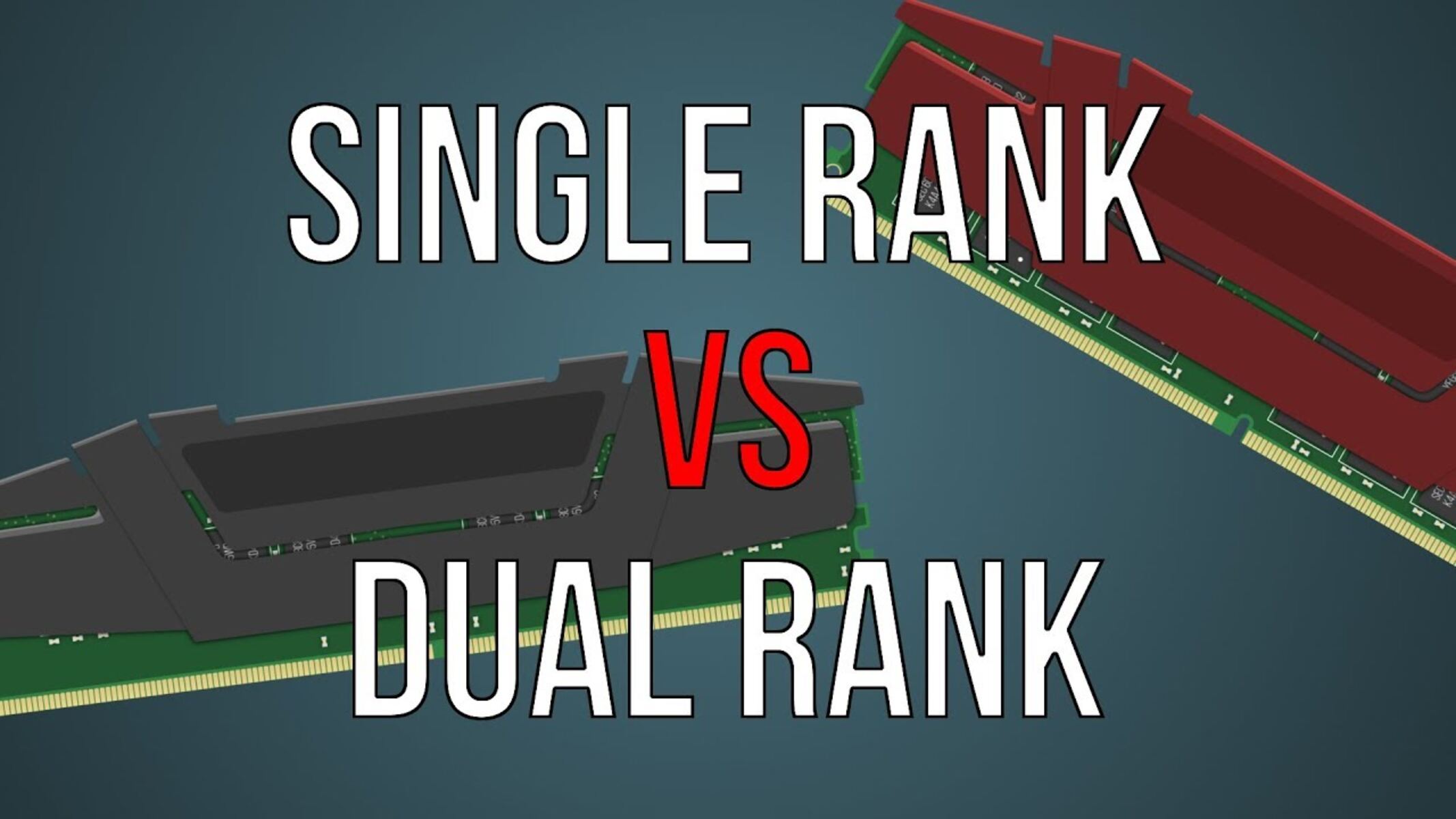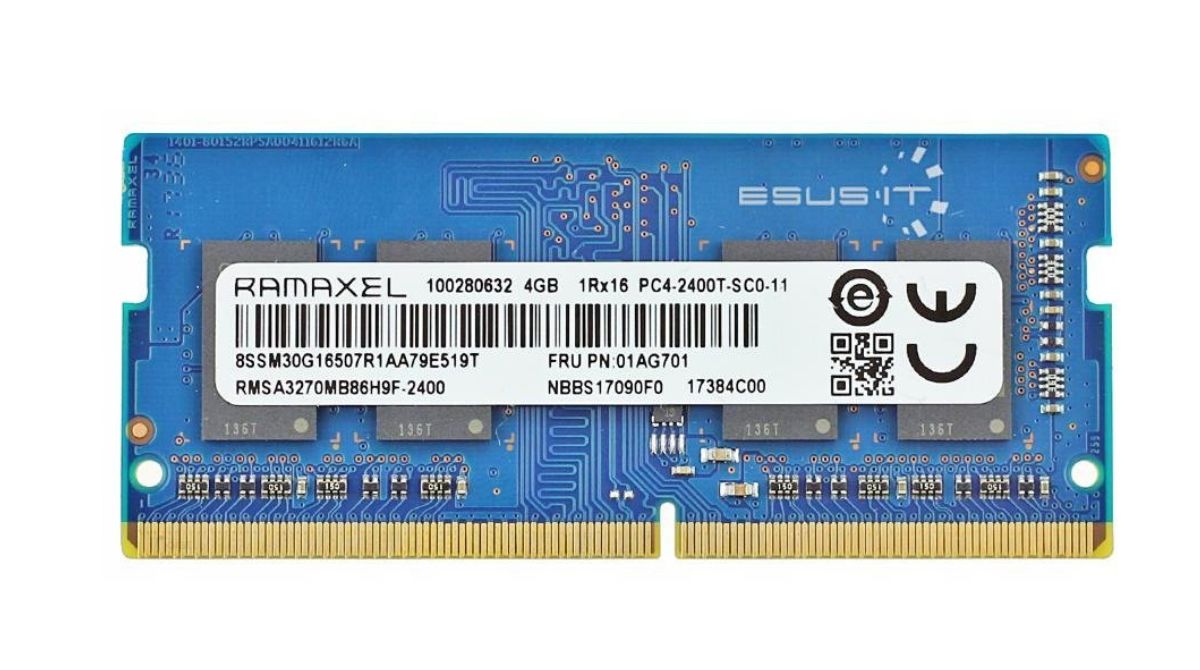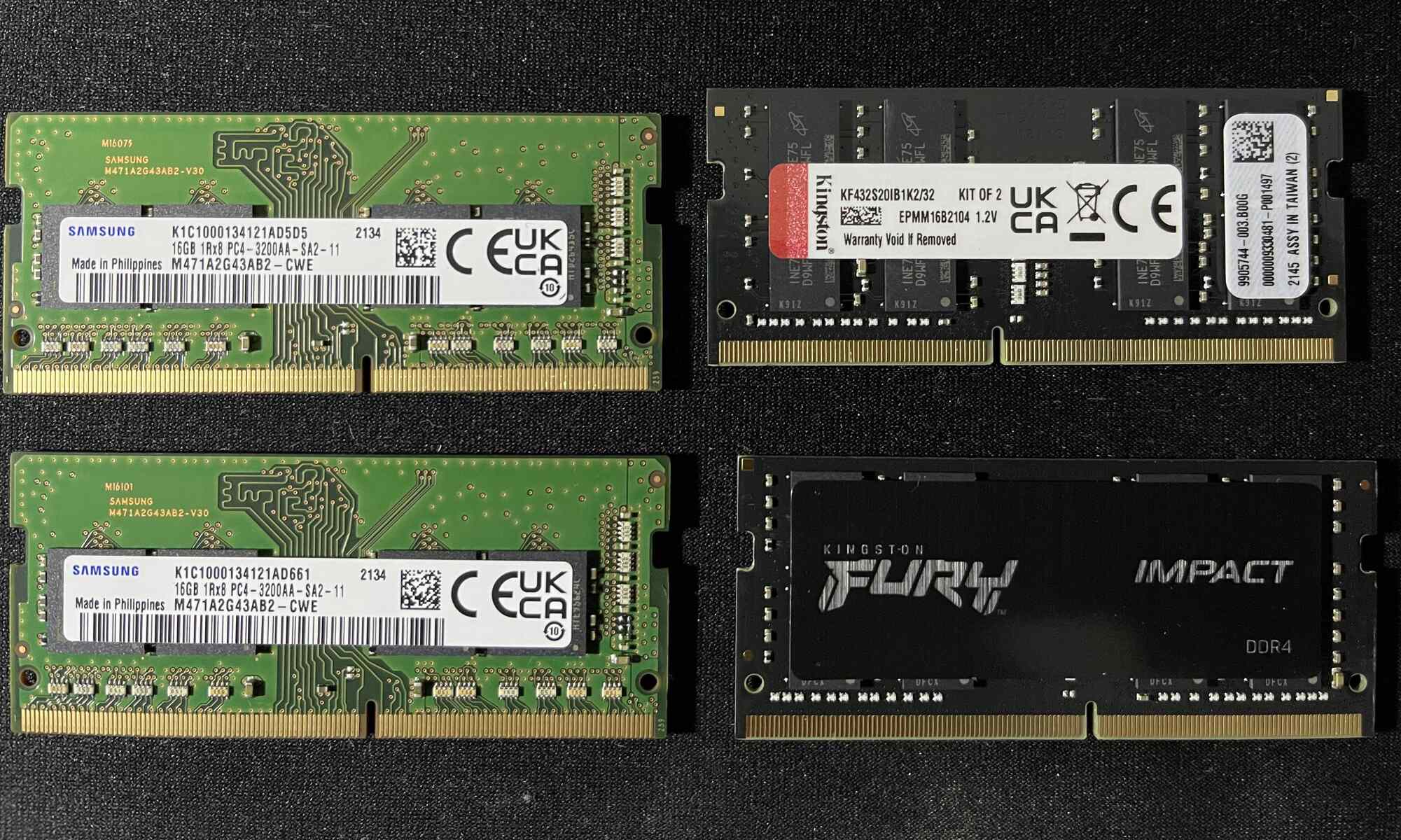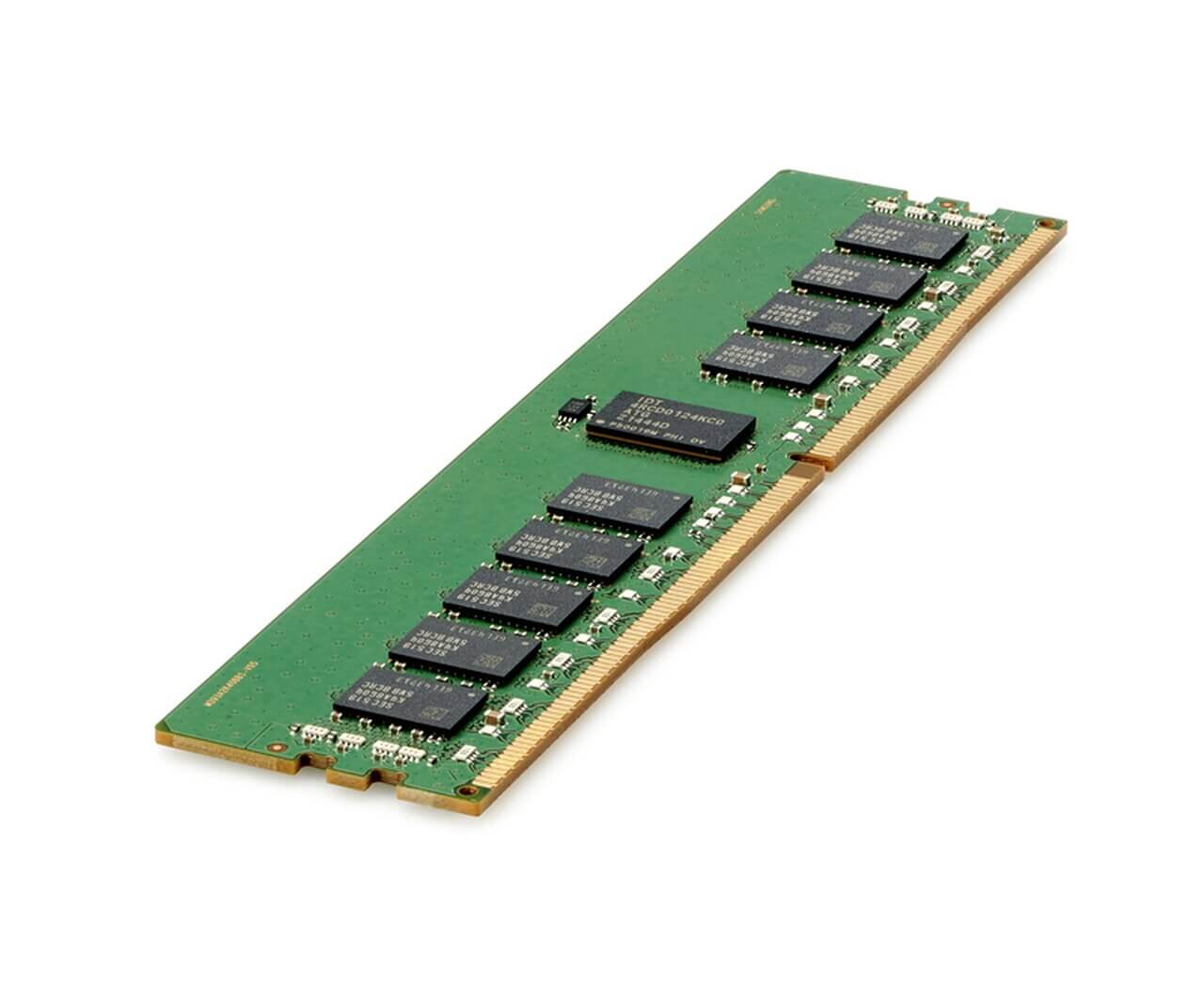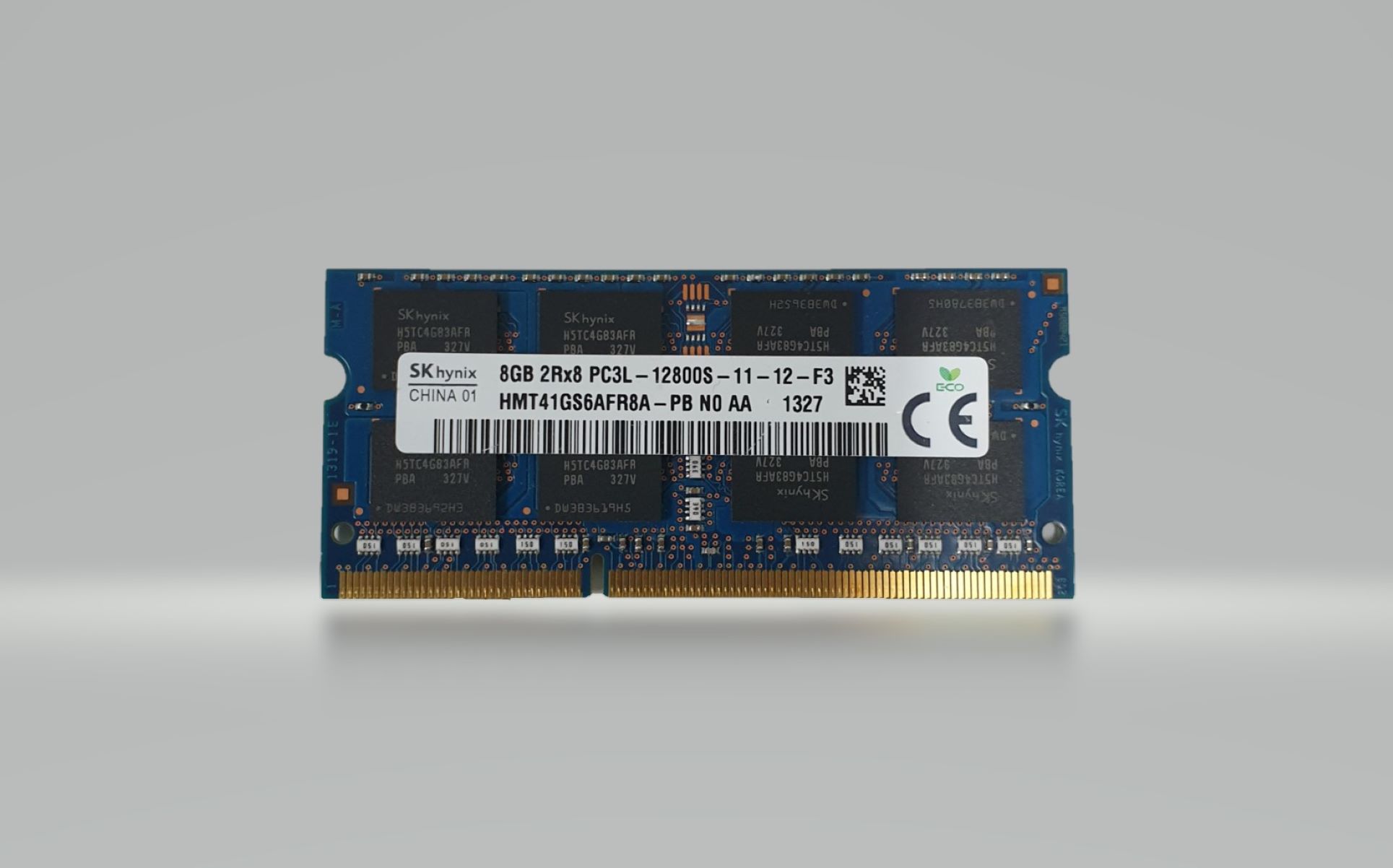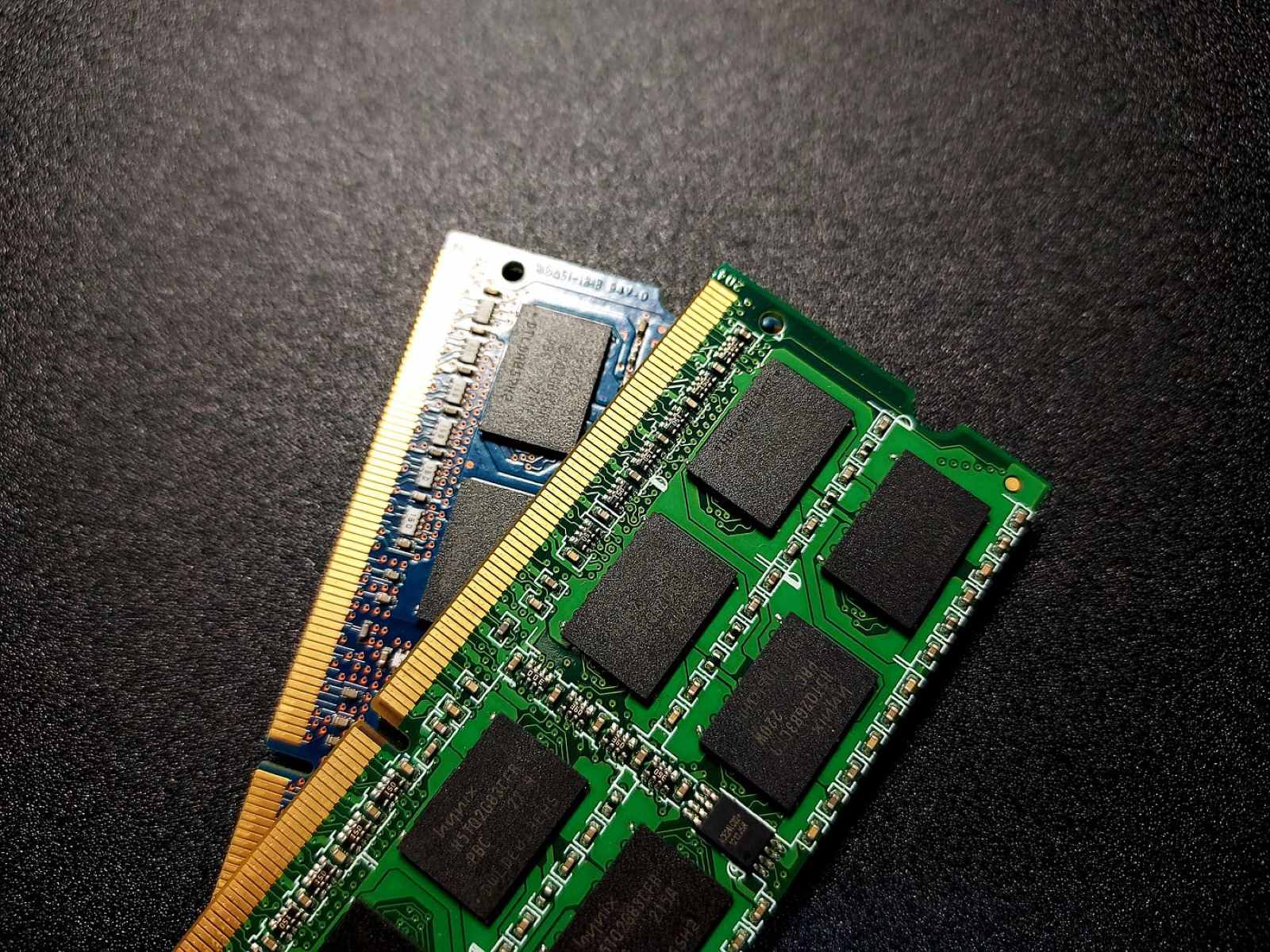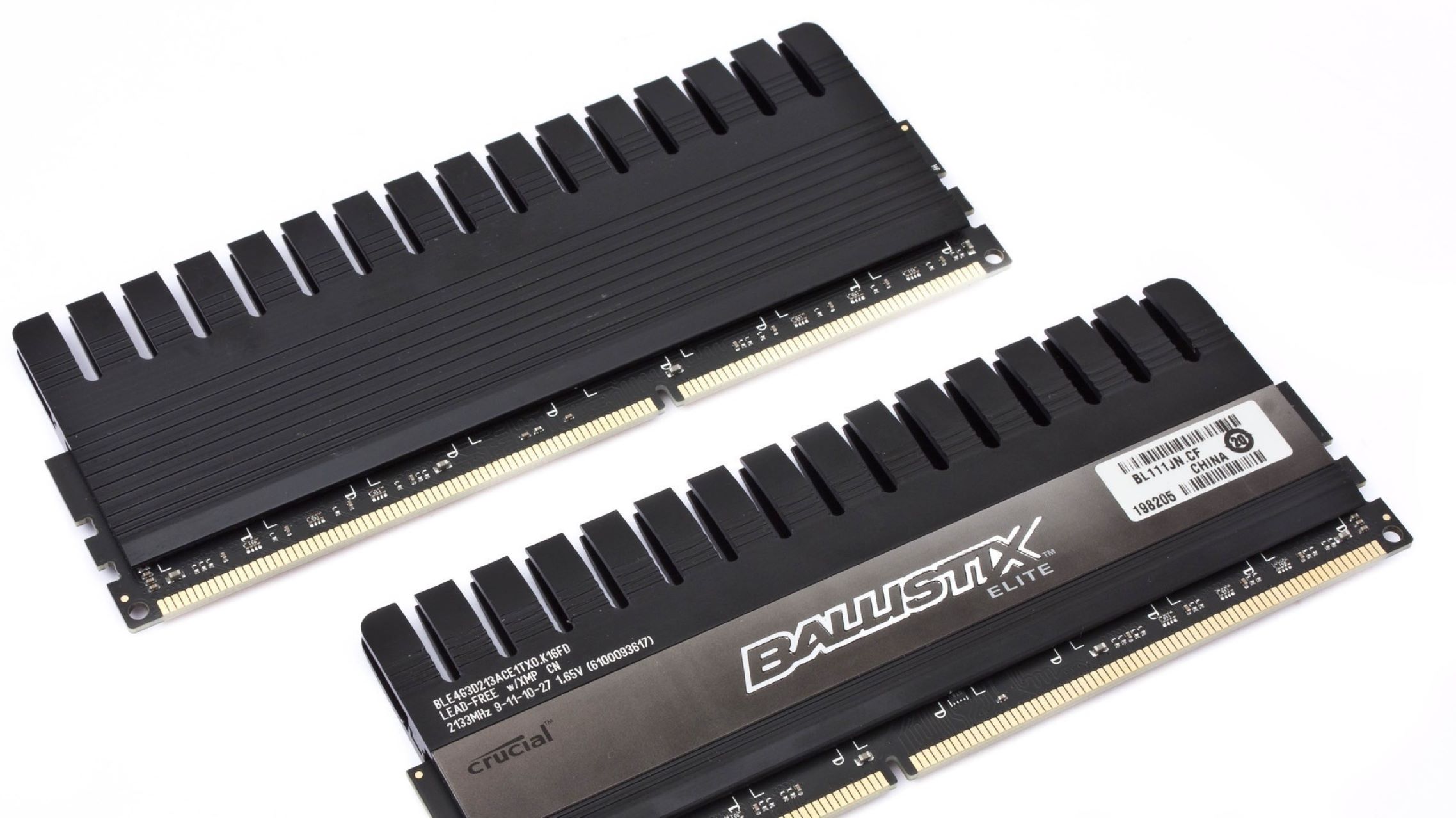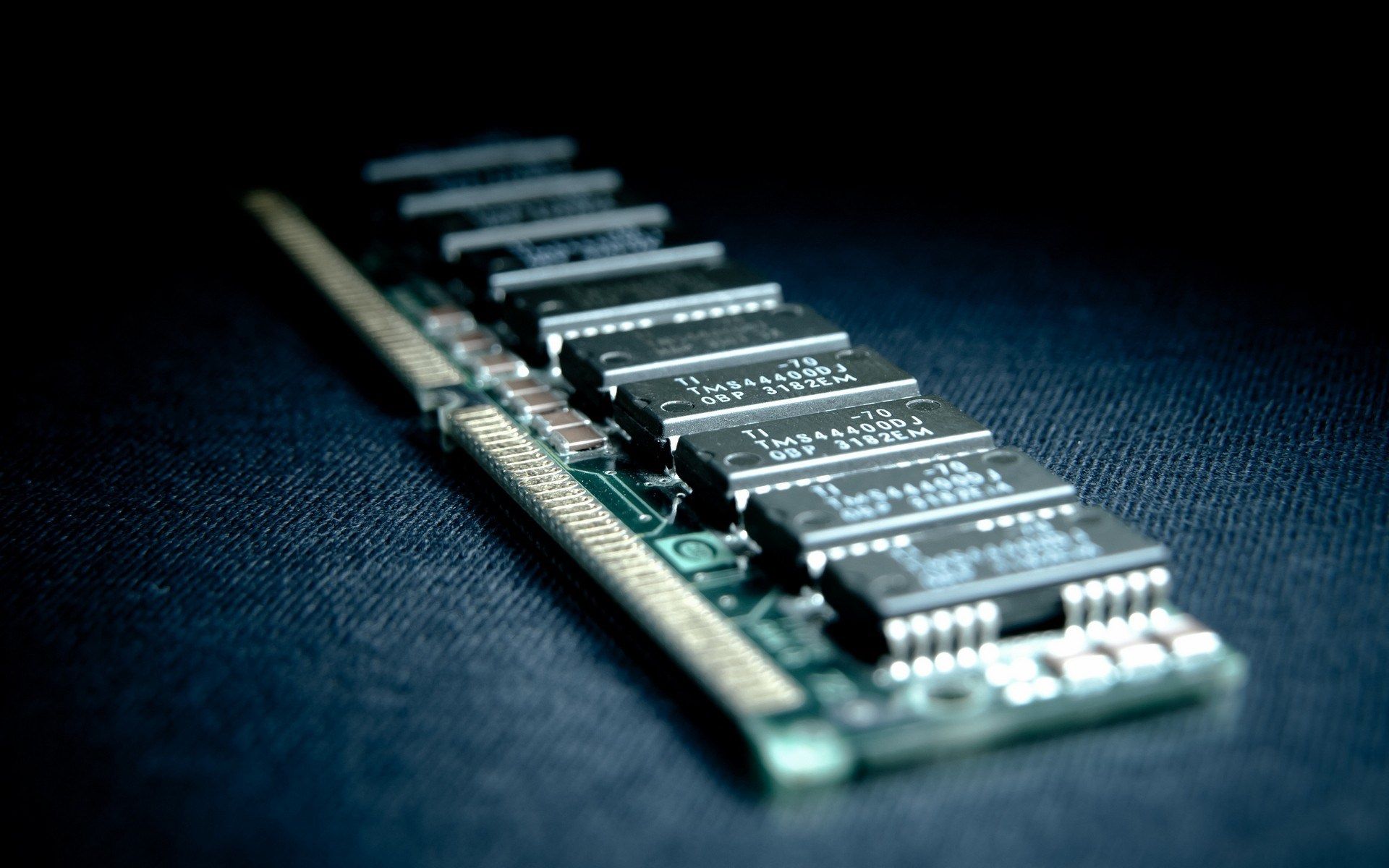Introduction
Welcome to our guide on the difference between dual ranked RAM and single ranked RAM. If you’re building or upgrading your computer’s memory, you may have come across these terms and wondered what sets them apart. In this article, we will explore the characteristics and performance differences between dual ranked and single ranked RAM modules, helping you make an informed decision when choosing the right RAM for your system.
Random Access Memory (RAM) is an essential component in any computer system. It provides temporary storage for data that the CPU needs to access quickly. When it comes to RAM modules, they can be classified as single ranked or dual ranked based on their physical design and organization.
Understanding the differences between single ranked and dual ranked RAM is crucial as it can impact your computer’s overall performance, compatibility, and future upgradability. So, let’s dive in and explore the key aspects of each RAM type.
In the following sections, we will discuss the characteristics and benefits of dual ranked RAM and single ranked RAM in detail, highlighting their speed and performance, compatibility with motherboards, power consumption, pricing, and availability. By the end, you’ll have a clearer understanding of the advantages and disadvantages of each RAM type, helping you make an informed decision on which one would best suit your computer needs.
What is Dual Ranked RAM?
Dual ranked RAM, also known as dual-sided RAM, refers to memory modules that have memory chips mounted on both sides of the module’s Printed Circuit Board (PCB). This design allows for increased memory density on a single module, as it effectively doubles the number of memory chips compared to single ranked RAM.
The dual ranked configuration enables the memory controller to access two sets of memory chips simultaneously, enhancing the module’s overall throughput and performance. This means that data can be read from or written to the memory faster, resulting in improved multitasking capabilities and smoother application performance.
Another advantage of dual ranked RAM is its capacity. By utilizing both sides of the module, it can accommodate more memory chips, thereby providing higher overall memory capacity. This is particularly beneficial for memory-intensive applications, such as video editing, gaming, and virtualization, where having ample RAM is crucial for optimal performance.
It’s worth noting that dual ranked RAM may have a slightly higher latency compared to single ranked RAM due to the increased electrical load on the memory controller. This means that accessing data from dual ranked RAM may take a fraction of a nanosecond longer, although the impact on real-world performance is generally negligible.
Overall, dual ranked RAM offers a balance of performance and capacity, making it an excellent choice for users who require a substantial amount of memory for demanding tasks. Whether you’re a professional user working with resource-intensive applications or a gamer looking for a smoother gaming experience, dual ranked RAM can provide a noticeable boost in performance.
What is Single Ranked RAM?
Single ranked RAM, also known as single-sided RAM, is a type of memory module that has memory chips mounted on only one side of the Printed Circuit Board (PCB). Unlike dual ranked RAM, which has memory chips on both sides, single ranked RAM offers a simpler design with a lower memory density.
Although single ranked RAM has fewer memory chips compared to dual ranked RAM, it still provides sufficient memory capacity for most everyday computing needs. This type of RAM is commonly found in entry-level and mid-range systems, where the demand for memory-intensive tasks is not as high.
One of the advantages of single ranked RAM is its lower power consumption. With fewer active memory chips, the power requirements for single ranked RAM modules are generally lower compared to their dual ranked counterparts. This can be especially beneficial for laptops, as it allows for longer battery life and improved energy efficiency.
In terms of compatibility, single ranked RAM tends to be more compatible with a wider range of motherboards. This is because some older motherboard models or systems with limited memory slots may have restrictions when it comes to accepting dual ranked RAM modules. Single ranked RAM offers greater flexibility in terms of compatibility, ensuring that it can be installed and used in various systems without any issues.
While single ranked RAM may not provide the same level of performance as dual ranked RAM, it still offers a reliable and cost-effective solution for everyday computing tasks. It can handle standard office applications, web browsing, and multimedia playback with ease, making it suitable for casual users and those on a budget.
Overall, single ranked RAM is a practical option for users who prioritize cost-efficiency, compatibility, and power consumption over demanding performance requirements. If you’re using your computer for everyday tasks without the need for heavy multitasking or resource-hungry applications, single ranked RAM can provide sufficient memory capacity and reliable performance at an affordable price point.
Speed and Performance Comparison
When it comes to speed and performance, dual ranked RAM and single ranked RAM exhibit some differences due to their respective designs and configurations.
Dual ranked RAM typically offers higher memory bandwidth compared to single ranked RAM. With memory chips mounted on both sides of the module, dual ranked RAM can provide faster data transfer rates, allowing for quicker access to stored information. This makes it well-suited for tasks that require large data transfers, such as video editing, 3D rendering, and high-end gaming.
On the other hand, single ranked RAM may have slightly lower memory bandwidth due to its simpler design. However, for most everyday computing tasks, the difference in performance between single ranked and dual ranked RAM is minimal and may not be noticeable in real-world scenarios. Whether you’re browsing the web, working with office applications, or streaming multimedia content, both types of RAM can provide sufficient performance.
It’s important to note that the speed and performance of RAM modules are also influenced by other factors, such as the CPU, motherboard, and the specific applications or tasks running on the computer. While dual ranked RAM can offer faster data transfer rates, its performance impact may be more evident in resource-intensive applications that heavily rely on memory performance.
In terms of multitasking capabilities, dual ranked RAM has an advantage due to its higher memory density and ability to access different memory banks simultaneously. This allows for smoother multitasking, as the CPU can retrieve data from multiple memory locations at the same time. This can be beneficial when running multiple applications or virtual machines simultaneously, as it reduces latency and improves overall system responsiveness.
However, for average users who primarily engage in everyday computing tasks, such as web browsing, document editing, and media consumption, the performance benefits of dual ranked RAM may not be significant enough to warrant the higher cost. Single ranked RAM provides ample speed and performance for these use cases, ensuring a smooth and responsive computing experience.
In summary, while dual ranked RAM has the potential to deliver higher performance in certain scenarios, such as resource-intensive tasks or heavy multitasking, the real-world difference in speed and performance between dual ranked and single ranked RAM may not be noticeable for most average users. Both types of RAM can provide sufficient performance for everyday computing needs, with the choice depending on specific requirements and budget considerations.
Compatibility with Motherboards
When considering RAM compatibility, it’s essential to take into account the motherboard’s specifications and the type of RAM modules it supports. Both dual ranked and single ranked RAM have different requirements and compatibility considerations to keep in mind.
Single ranked RAM tends to have broader compatibility with a wide range of motherboards. This is because the design and configuration of single ranked RAM modules are more commonly supported by older and budget-friendly motherboard models. Even some high-end motherboards may have limitations or restrictions when it comes to accepting dual ranked RAM.
On the other hand, dual ranked RAM is more commonly found in newer motherboard models that specifically support this type of RAM configuration. These motherboards are designed to handle the increased memory density and performance offered by dual ranked RAM. Newer chipset technologies and memory controllers are often optimized for dual ranked RAM, maximizing the benefits that this type of RAM can provide.
It is crucial to consult the motherboard’s user manual or specifications to determine the supported RAM types before making a purchase. The motherboard’s documentation will indicate whether it is compatible with dual ranked RAM, single ranked RAM, or both. This ensures that you choose the appropriate RAM module that will be recognized and utilized correctly by your motherboard.
Furthermore, it’s important to consider the number of memory slots available on the motherboard. Some motherboards may have restrictions on the maximum memory capacity per slot or the total memory capacity supported. If you plan on installing a large amount of RAM, this compatibility aspect becomes even more important.
Ultimately, the compatibility of RAM with motherboards relies on the specific hardware configurations and compatibility guidelines provided by the motherboard manufacturer. It is crucial to do thorough research and consult official documentation or technical resources to ensure that the RAM you choose is compatible with your motherboard and other system components.
Whether you opt for dual ranked or single ranked RAM, always check the motherboard’s specifications to guarantee a successful and compatible RAM installation, avoiding any potential compatibility issues.
Power Consumption
Power consumption is an important factor to consider when choosing between dual ranked RAM and single ranked RAM, especially for users concerned with energy efficiency or using laptops or portable devices.
Overall, single ranked RAM tends to have lower power consumption compared to dual ranked RAM. This is because single ranked RAM modules have fewer active memory chips, resulting in lower power requirements. The reduced power consumption can contribute to energy savings and longer battery life, making single ranked RAM an excellent choice for laptops or devices that rely on limited power sources.
On the other hand, dual ranked RAM requires more power due to its increased memory density and the additional memory chips on both sides of the module. While the difference in power consumption between dual ranked and single ranked RAM may not be significant, it is still worth considering in scenarios where power efficiency is a top priority.
It’s important to note that the power consumption of RAM modules can also vary depending on the specific brand, model, and the frequency at which they operate. Higher frequency RAM modules tend to consume more power than lower frequency ones. Therefore, it’s recommended to check the power specifications provided by the manufacturer to ensure you are aware of the power requirements associated with the RAM modules you choose.
When it comes to desktop PCs, the power consumption difference between dual ranked and single ranked RAM modules may not have a noticeable impact on overall system power consumption. However, for energy-conscious users or those who desire optimal power efficiency, single ranked RAM can offer a slight advantage in terms of reducing power usage.
In summary, single ranked RAM generally has lower power consumption compared to dual ranked RAM. This makes it a more suitable choice for those seeking energy efficiency or using laptops and portable devices. However, the power consumption difference between the two types of RAM modules may not be substantial and should be considered alongside other factors when making a decision.
Pricing and Availability
When it comes to pricing and availability, there are a few considerations to keep in mind when choosing between dual ranked RAM and single ranked RAM.
In terms of pricing, single ranked RAM is generally more affordable compared to dual ranked RAM. This is mainly because single ranked RAM modules have a simpler design and lower memory density, making them less expensive to manufacture. The lower price point of single ranked RAM can be particularly advantageous for budget-conscious users or those looking for a cost-effective memory solution.
On the other hand, dual ranked RAM tends to be priced slightly higher due to its increased memory density and potential performance benefits. The additional memory chips and enhanced capabilities of dual ranked RAM contribute to its higher cost. However, the price difference between the two types of RAM is not typically significant, especially with the continuous advancements in technology and competition in the market.
Availability may also come into play when considering which type of RAM to choose. Single ranked RAM is more widely available and can be found in various capacities and configurations, making it easier to find and purchase. It is compatible with a wider range of motherboards, which further contributes to its availability. On the other hand, dual ranked RAM may have more limited availability due to its specialized design and compatibility requirements.
It’s important to note that pricing and availability can vary depending on factors such as the brand, model, and capacity of the RAM modules. Additionally, market conditions and supply chain factors can also influence prices and availability. It’s recommended to do thorough research, compare prices from different vendors, and consider reliable brands to ensure you get the best value for your money.
In summary, single ranked RAM tends to be more affordable and widely available compared to dual ranked RAM. The lower price point and broader compatibility make single ranked RAM an attractive option for budget-conscious users. However, the price difference between the two types of RAM modules is generally not significant, and availability can vary based on market conditions and specific requirements.
Which One Should You Choose?
When deciding between dual ranked RAM and single ranked RAM, there are a few key factors to consider based on your specific needs and priorities.
If you require higher memory capacity, enhanced performance, and improved multitasking capabilities for resource-intensive tasks such as video editing, gaming, or virtualization, dual ranked RAM may be the better choice. Its increased memory density and ability to access multiple memory banks simultaneously can provide a noticeable performance boost in these scenarios. Additionally, if you have a newer motherboard that specifically supports dual ranked RAM, it may be a more optimal choice.
On the other hand, if you have more average usage needs, such as everyday computing, web browsing, document editing, and multimedia playback, single ranked RAM can provide sufficient performance at a more affordable price point. It offers broad compatibility, lower power consumption, and wider availability, making it an excellent choice for budget-conscious users or those seeking a cost-effective memory solution.
Compatibility with your motherboard also plays a crucial role in the decision-making process. Check the motherboard’s specifications and guidelines to ensure that it supports the type of RAM you choose, whether it’s single ranked RAM or dual ranked RAM. This will ensure seamless compatibility and optimal performance.
Consider your budget as well. While dual ranked RAM may offer enhanced performance, it tends to be priced slightly higher compared to single ranked RAM. Determine how much memory capacity you need and evaluate whether the performance difference justifies the price difference for your specific use case.
Lastly, keep in mind your future upgradability plans. If you think you may need to expand your memory capacity in the future, consider the potential limitations and restrictions that your motherboard may have with both single ranked and dual ranked RAM. Check the maximum memory capacity it supports and whether there are empty memory slots available for future upgrades.
In the end, the choice between dual ranked RAM and single ranked RAM depends on your specific needs, budget, compatibility, and future upgradability considerations. Assess your usage requirements, evaluate the benefits and drawbacks of each RAM type, and make an informed decision based on what will best suit your needs.
Conclusion
Choosing between dual ranked RAM and single ranked RAM comes down to understanding your specific needs and priorities. Both types of RAM have their advantages and considerations, and the decision should be based on factors such as performance requirements, compatibility, budget, and future upgrade plans.
If you require higher memory capacity, improved multitasking capabilities, and enhanced performance for resource-intensive tasks, such as video editing or gaming, dual ranked RAM may be the better choice. Its increased memory density and ability to access multiple memory banks simultaneously can provide a noticeable boost in performance. Ensure that your motherboard supports dual ranked RAM to maximize compatibility and performance.
On the other hand, if you have more average usage needs and are working on a budget, single ranked RAM is a suitable option. It offers sufficient performance for everyday computing tasks, web browsing, and multimedia playback at a more affordable price point. Single ranked RAM also tends to have broader compatibility with a wider range of motherboards.
Consider your future upgradability plans as well. Assess whether you may need to expand your memory capacity in the future and ensure that your chosen RAM type is compatible with your motherboard’s memory slots and maximum memory capacity specifications.
Lastly, evaluating the pricing, availability, and power consumption differences between dual ranked and single ranked RAM can also help inform your decision. Keep in mind that the actual impact on power consumption and performance may vary based on the specific brand, model, and frequency of the RAM modules.
In conclusion, there is no one-size-fits-all answer when it comes to choosing between dual ranked RAM and single ranked RAM. It’s essential to assess your specific requirements, balance them with your budget and compatibility concerns, and make an informed decision based on what will best suit your needs. With careful consideration and research, you can choose the RAM type that offers optimal performance, compatibility, and value for your computer system.







